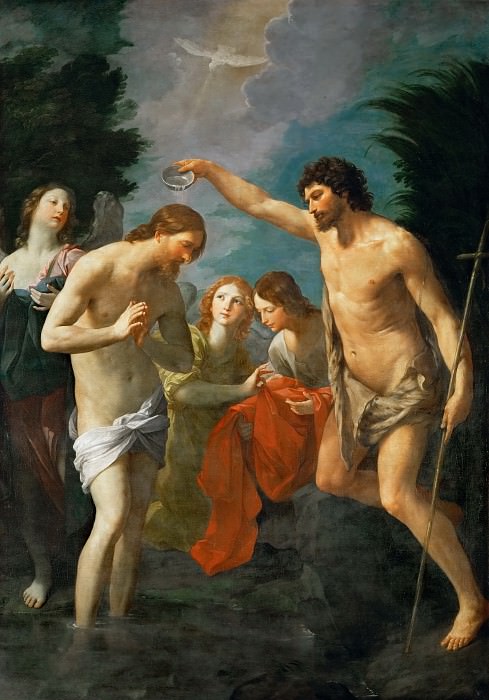Guido Reni (1575-1642) – Baptism of Christ Kunsthistorisches Museum
Kunsthistorisches Museum – Guido Reni (1575-1642) -- Baptism of Christ
Edit attribution
Download full size: 3695×5298 px (7,2 Mb)
Back to album: Kunsthistorisches Museum
Reni depicts in his own way an episode that is well known to all. He created this masterpiece at a time when his art was in full bloom. Christ was being baptized, and we see the moment when he had already stepped out. His head is bowed and his eyes are modestly lowered. All of this suggests that he is incredibly subdued. John the Baptist occupies most of the canvas. If we take the physical plane, we can say that it is he who dominates this painting. The coloristic solution is incredibly simple.
Description of the painting The Baptism of Christ by Guido Reni
Reni depicts in his own way an episode that is well known to all. He created this masterpiece at a time when his art was in full bloom. Christ was being baptized, and we see the moment when he had already stepped out. His head is bowed and his eyes are modestly lowered. All of this suggests that he is incredibly subdued.
John the Baptist occupies most of the canvas. If we take the physical plane, we can say that it is he who dominates this painting.
The coloristic solution is incredibly simple. The painter seeks to emphasize the spirituality of the event he is depicting. Several plans can be distinguished in this painting. In the foreground, John and Christ are in front of us. In the middle is the angels, and in the background is the landscape. Reni uses a particular rhythm of circularity through the gestures and gazes of all the characters in this painting. This is to keep the viewer’s attention focused specifically on the experience of Christ.
In the process of baptism one is purified and reborn. Mystics were convinced that this rite expressed humility. The artist’s interpretation is much the same. We see a Christ who is unquestioningly subject to the will of God. That is why his back and knees are bent and his head is bowed. The whole pose speaks of complete submission. The figure is illuminated by the bright rays of the sun, but only from above and to the left. The chest is completely submerged in shadow, yet the right hand is magnificently illuminated by the light.
Directly behind Jesus is an angel. The gold of his robes becomes the backdrop for Christ’s left arm, which is miraculously in shadow. In the angel’s hands are Jesus’ garments. He is looking at him very intently. This pose was then repeated by many artists.
The artist skillfully plays with contrasts. The hair of the angel is dyed a pleasant golden-red tone, which effectively contrasts with the cold sky. Reni was a true master who was able to paint the Gospel story so heartfelt and vividly.
Кому понравилось
Пожалуйста, подождите
На эту операцию может потребоваться несколько секунд.
Информация появится в новом окне,
если открытие новых окон не запрещено в настройках вашего браузера.
You need to login
Для работы с коллекциями – пожалуйста, войдите в аккаунт (open in new window).




















You cannot comment Why?